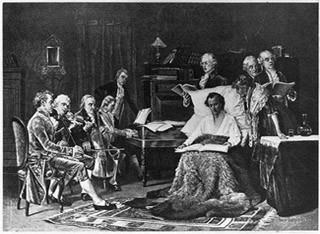Course Description
In this subject, we explore the harmonic, melodic, and formal practices of western music, principally the so-called “Classical” idiom of central Europe, ca. 1750-1825. Topics include a quick review of material covered in 21M.301, chromatic harmony (viio7, bII6, and chords of the augmented sixth), and …
In this subject, we explore the harmonic, melodic, and formal practices of western music, principally the so-called “Classical” idiom of central Europe, ca. 1750-1825. Topics include a quick review of material covered in 21M.301, chromatic harmony (viio7, bII6, and chords of the augmented sixth), and chromatic modulation; lecture study and discussion are complemented by work in the keyboard laboratory and sight-singing laboratory. All areas of study will be integrated in a semester-long project of composing a theme and two variations in Classical style.
Course Info
Instructor
Departments
Learning Resource Types
assignment
Problem Sets
grading
Exams
group_work
Projects with Examples

Mozart singing his requiem. (Image courtesy of Library of Congress, Prints and Photographs Division [reproduction number, LC-USZ62-69168 (b&w film copy neg.)].)










